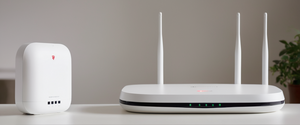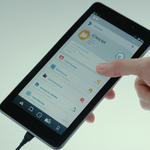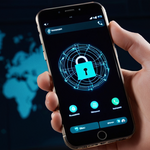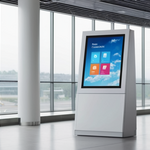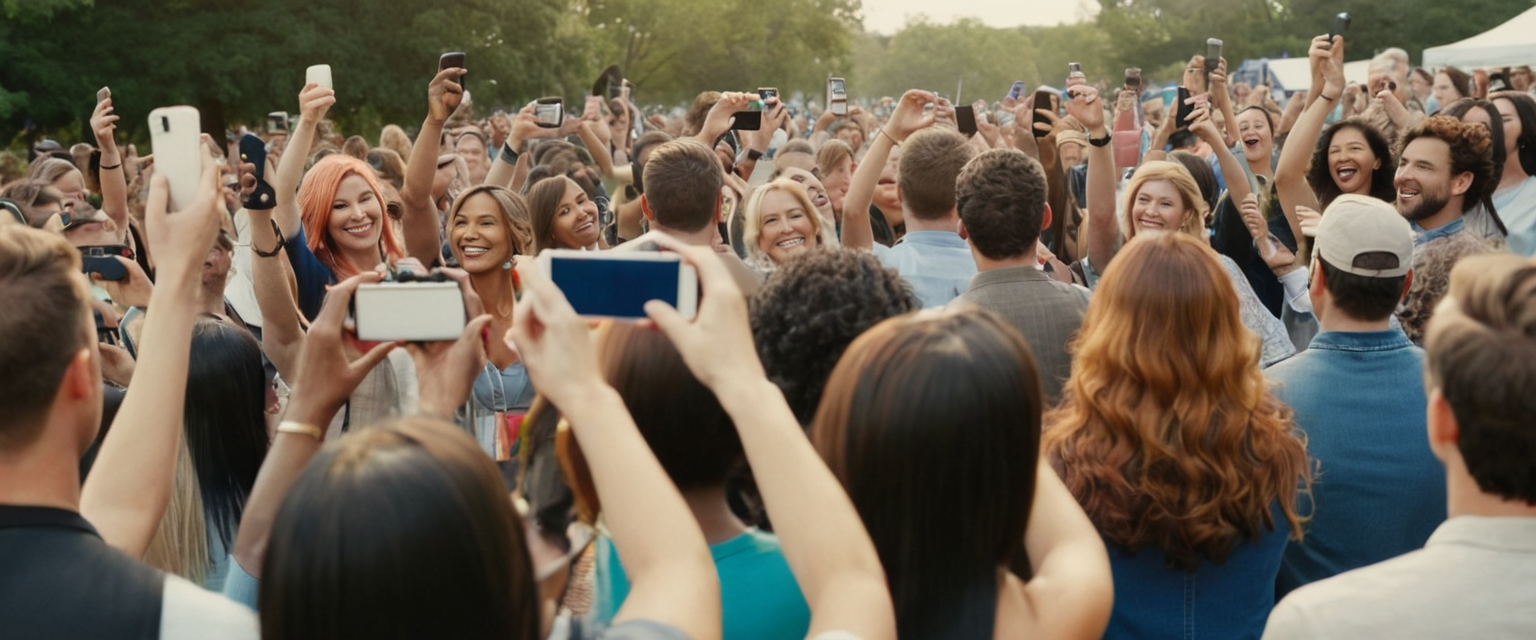
This comprehensive analysis examines the complex landscape of recording and surveillance at public events in the United States, addressing the tension between individuals’ right to capture moments through photography and video recording, the privacy rights of attendees and performers, and the legal frameworks that govern such activities. The legality of recording at public events depends significantly on whether consent has been obtained, the location and nature of the event, whether audio or video is being recorded, the use intended for the recording, and the specific jurisdiction where the event occurs. American citizens enjoy broad First Amendment protections for recording in public spaces, yet these protections are substantially circumscribed by state and federal wiretapping laws, copyright protections, venue policies, and evolving privacy legislation. Understanding these interrelated legal domains is essential for anyone attending, organizing, or documenting public events to avoid inadvertently violating privacy rights or committing criminal offenses while engaging in what may feel like ordinary behavior in an increasingly surveilled society.
Federal Legal Framework: Constitutional Protections and the Reasonable Expectation of Privacy
The constitutional foundation for recording at public events rests primarily on two pillars: First Amendment protections for freedom of speech and press, and Fourth Amendment protections against unreasonable searches and seizures related to privacy expectations. The First Amendment protects the ability to record matters of public interest occurring in public places, and recording police officers, government officials, and newsworthy events generally falls under this protection. The Supreme Court recognized in Branzburg v. Hayes that “without some protection for seeking out the news, freedom of the press could be eviscerated,” establishing that gathering information, including through recording, constitutes protected expression. A growing consensus of federal appellate courts has affirmed that filming police and other public officials performing their duties in public places is protected by the First Amendment, as this serves the core purpose of checking government abuse of power and enabling public accountability.
However, this broad constitutional protection is substantially limited by a doctrine known as the “reasonable expectation of privacy,” which originated from the Supreme Court’s 1967 decision in Katz v. United States. The Katz test asks whether a person subjectively expects privacy in a given situation and whether society would recognize that expectation as reasonable. This test has become the primary lens through which courts analyze privacy claims in recording contexts. The doctrine recognizes that not all locations in public are equally public, and individuals may retain reasonable expectations of privacy even when in spaces technically accessible to the public. For instance, while recording someone on a city street generally does not violate privacy expectations, recording them through a window of their private residence or in a bathroom would violate both privacy expectations and specific state and federal statutes criminalizing such voyeuristic recordings.
Federal law also establishes baseline recording consent requirements through the Electronic Communications Privacy Act (ECPA) of 1986 and related statutes. Federal law codified in 18 U.S.C. Section 2511(2)(d) establishes a one-party consent standard for recording telephone and in-person conversations, meaning that as long as one party to a conversation consents to the recording, the recording is lawful under federal law. This contrasts with some state laws that impose all-party or two-party consent requirements. Federal law also permits civil damages under 18 U.S.C. Section 2520 for violations of wiretapping statutes. However, even under the permissive one-party consent standard, federal law prohibits recording when the purpose is to commit a crime or tortious act, providing no exception for recordings made in furtherance of illegal activity.
State-Level Variation: One-Party versus All-Party Consent Regimes
The United States presents a patchwork of state recording laws that create significant complexity for anyone recording at events that span state boundaries or involve participants from different jurisdictions. A majority of states follow a one-party consent rule, meaning that a person who is a party to a conversation can record it without obtaining the consent of other participants. Approximately 37 states plus the District of Columbia adhere to the one-party consent standard. These states include Texas, Missouri, North Carolina, Colorado, Virginia, and many others. In these jurisdictions, if you are present at a public event and participate in or overhear a conversation, you may generally record it without notifying the other participants, provided you are a party to the conversation or obtain consent from at least one other party.
In stark contrast, approximately 11 states impose all-party or two-party consent requirements, meaning that all participants in a conversation must consent before recording can legally occur. These stricter jurisdictions include California, Delaware, Florida, Illinois, Maryland, Massachusetts, Michigan (at least for third-party recordings), Montana, New Hampshire, Pennsylvania, and Washington. The consequences of violating all-party consent requirements are substantial. In California, for example, unauthorized recording of a confidential communication is a crime under Penal Code Section 632, carrying penalties of up to one year of imprisonment and potentially $2,500 in fines per violation. Similarly, Illinois treats violations as a Class 3 felony for first offenses, carrying penalties of 2-5 years imprisonment and a $25,000 fine.
Several states occupy a middle ground with mixed consent requirements that vary depending on whether the communication is electronic or in-person. Connecticut requires all-party consent for electronic recordings but only one-party consent for in-person conversations, while Oregon imposes the opposite standard—all-party consent for in-person conversations but only one-party for electronic recordings. Hawaii and Maine require all-party consent only in particularly private locations but otherwise maintain one-party consent standards. These nuanced variations create legal minefields for individuals organizing events that span jurisdictions or involve participants from different states.
For interstate communications, the applicable law remains unsettled, and individuals are advised to err on the side of caution by assuming the stricter state’s law will apply. A journalist or individual recording a phone conversation between a one-party consent state and an all-party consent state should presume that the all-party consent law will govern, as either jurisdiction may assert authority and an injured party may choose to file suit in the more favorable jurisdiction. This conservative approach protects against potential criminal liability or civil damages that could otherwise be incurred.
Audio Recording versus Video Recording: Distinct Legal Standards
One critical distinction that permeates recording law is the differential treatment of audio recording versus video-only recording. While many people assume that recording laws treat audio and video identically, this is not the case. Video recording without audio frequently receives greater First Amendment protection and has fewer legal restrictions than audio recording, creating what scholars call an asymmetrical legal landscape.
Recording video in public places without capturing audio is generally lawful across the United States, even in all-party consent states, provided the video does not invade reasonable privacy expectations. For example, photographing or recording people at a public park, street, or large outdoor gathering is generally permitted. The reasoning is that video recording merely captures what is visible to the naked eye in public, whereas audio recording captures private conversations that might not be audible to casual observers. However, this distinction breaks down when video recording captures audio of private conversations or when recording is done surreptitiously through means that extend human perception, such as using long-range microphones to record conversations from a great distance or using infrared technology to see through walls.
Federal law and state laws impose strict requirements for audio recording of conversations with a “reasonable expectation of privacy,” even if the audio is captured through a camera in a public place. Many audio-equipped security cameras installed in commercial or institutional settings must comply with either one-party or all-party consent requirements, depending on the jurisdiction. The practical solution that many establishments employ is to post prominent signs notifying people that audio recording is occurring; by choosing to enter such areas despite the signage, individuals provide implied consent to being recorded. This approach mirrors the federal approach to security cameras, which permits audio recording when one party (such as the business operating the camera) provides consent through advance notice.
Recording in Publicly Accessible but Privately Owned Spaces: Venue Rights and Policies
A crucial distinction in event recording law concerns whether an event occurs in a true public space (such as a city park or street owned by the municipality) versus a publicly accessible but privately owned space (such as a shopping mall, concert venue, or rented event space). Courts have established that privately owned spaces retain the right to set their own recording policies, and these policies are generally enforceable against attendees. The starting principle is that private property owners have a right to regulate activities on their property, including prohibiting photography and recording.
Venues frequently impose blanket prohibitions on recording, particularly for live performances, theatrical presentations, and concerts. This restriction flows from copyright law, which grants performance copyright holders exclusive rights to control recordings of their work. Many ticket terms and conditions explicitly state that attendees may not bring recording equipment or, if permitted, may not record without express permission. For instance, Insomniac Events’ festival guidelines explicitly prohibit “professional photo, video, or audio recording equipment” with only personal cell phones permitted, subject to venue discretion. Similarly, AEG Presents’ festival ticket terms state that “without the express prior written permission of the Event producer, User may not bring any audio or video recording devices (except for personal cell phones).”
The legal basis for these restrictions is multifaceted. First, the venue owner’s property rights permit them to exclude recordings from their premises. Second, performance copyright holders maintain exclusive rights to make and authorize reproductions of their performances under 17 U.S.C. Section 106, and unauthorized recordings constitute copyright infringement. Third, many states have enacted specific statutes criminalizing the unauthorized recording of motion pictures in theatrical settings. For example, New Mexico Statutes Section 30-16C-1 makes it a misdemeanor to operate a recording device to record a motion picture in a movie theater without the consent of the theater owner.
However, enforcement of recording prohibitions can create a conflict between competing interests. Disputes have arisen when artists attempt to enforce recording bans too strictly, potentially alienating fans who view recording as part of the modern event experience. Some artists and venues have adopted middle-ground approaches, such as permitting limited personal recording for non-commercial use during certain moments or providing official “digital souvenir packages” that monetize recordings, as Linkin Park experimented with, or tracking concert tapes as Bad Bunny has done, filing cease-and-desist notices against unauthorized uploads.
The Role of Reasonable Expectation of Privacy at Events
The concept of reasonable expectation of privacy functions as a critical moderating principle that limits even legitimate venue policies and protects attendees in some contexts. Courts have held that while attendees at large, public outdoor events such as city parades or political rallies have a significantly reduced expectation of privacy, attendees at smaller, more intimate gatherings may retain meaningful privacy expectations.
The factors courts consider when assessing privacy expectations include the size of the gathering, whether the event is held indoors or outdoors, whether the event is free or ticketed, the nature of information being recorded, and whether photography or recording is commonly expected at the particular type of event. For example, at a massive outdoor concert attended by thousands in a public park, attendees have minimal expectation of privacy simply from appearing in the crowd and being visible to other attendees. However, at a small, private corporate event held in a rented conference room, attendees would retain a much higher expectation of privacy even if the room is technically accessible to registered participants.
The distinction between editorial and commercial use also affects privacy analysis. Photography for editorial purposes—such as news coverage, documentation of public events, or artistic expression—receives greater First Amendment protection and may not require consent from individuals in the photographs. However, using photographs of recognizable individuals for commercial purposes, such as advertising or promotional materials, typically requires explicit consent through signed releases, even if the individuals appear in the photographs. The First Amendment does not extend full protection to commercial speech in the same manner as editorial speech, and state laws protecting the “right of publicity” prevent individuals’ likenesses from being used for commercial gain without permission.
Consent Mechanisms: Active, Passive, and Implied Consent in Event Contexts
Event organizers and photographers employ three general mechanisms to establish consent for recording attendees and participants: active consent, passive consent, and implied consent through ticket terms. Understanding these mechanisms and their legal validity across different jurisdictions is essential for event compliance.
Active consent requires that individuals explicitly indicate their agreement to be recorded, typically through signing a written form, clicking an online checkbox, or verbally confirming consent. Active consent provides the strongest legal protection and is clearly compliant with the most stringent privacy regimes, including all-party consent states and European regulations like the General Data Protection Regulation (GDPR). At events, active consent might involve having attendees sign a release form at registration or requiring them to click an “I Agree” button before accessing recordings. Some event platforms automatically require active consent for video recordings; Microsoft Teams, for example, can be configured to require explicit participant consent, muting other participants until they actively respond “Yes” or “No” to the recording consent question.
Passive consent involves providing notice that recording is occurring (such as signage or an announcement), with the understanding that continued participation constitutes acceptance of recording. Many venues and events employ this approach, posting signs stating “Recording in Progress” or including language in ticket terms that states “Your attendance constitutes your consent to be photographed and recorded.” Passive consent is generally permissible in one-party consent jurisdictions, as the notice satisfies the requirement that at least one party to the communication consent, and the organization or individual responsible for the event providing notice counts as that consenting party. However, passive consent may be insufficient in all-party consent jurisdictions like California, where courts have generally required active, affirmative consent from each individual being recorded.
Implied consent through ticket terms and conditions represents a hybrid approach whereby event attendees consent to recording by purchasing and using a ticket to the event. Many venues embed recording authorization language directly into ticket terms of service. The Horizon Foundation’s event ticket language exemplifies this approach: “By entering an event or program of the Horizon Foundation, you are entering an area where photography, audio and video recording may occur. Your entry and presence on the event premises constitutes your consent to be photographed, filmed, and/or otherwise recorded.” Similarly, AEG Presents’ festival ticket terms state that by accepting and using a ticket, attendees agree to be bound by all specified terms, including those addressing recording and intellectual property. While these implied consent mechanisms have generally been upheld in court, they may face challenges in stricter jurisdictions if attendees argue they were unaware of the recording provisions or did not meaningfully agree to them.
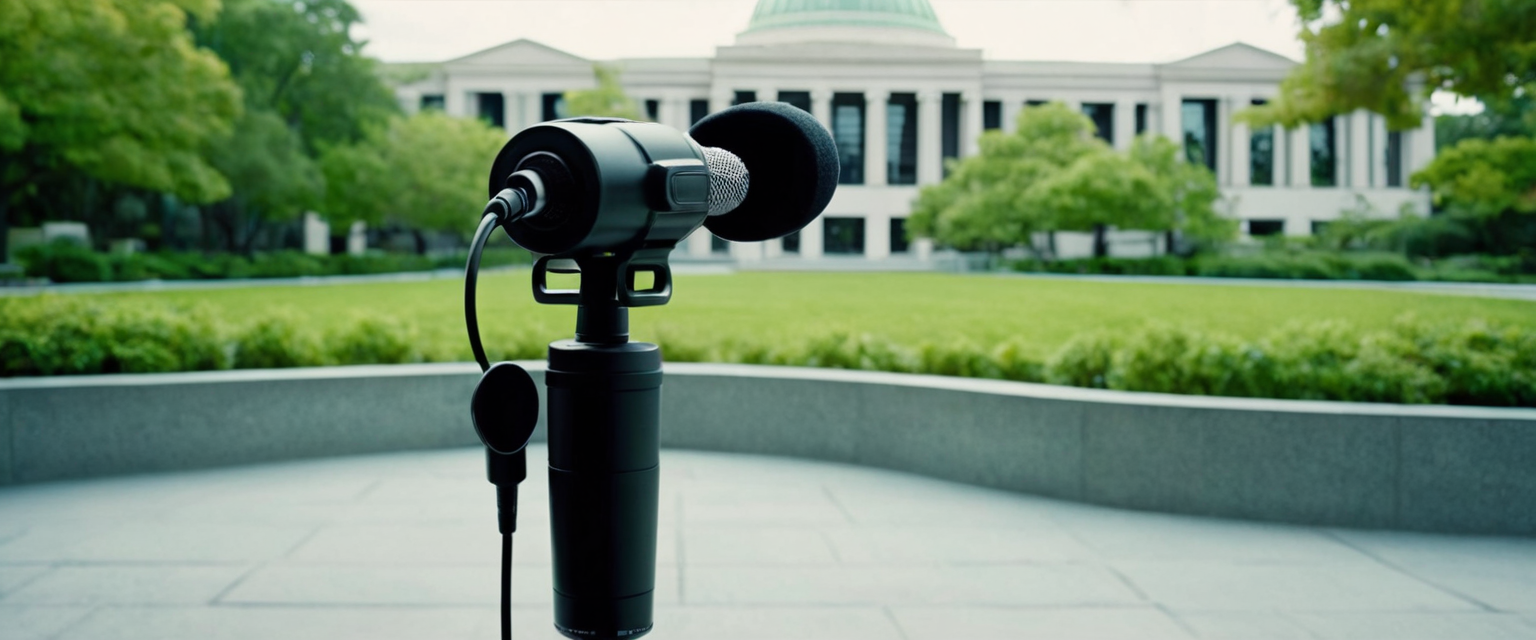
Recording in Different Venue Types: Streets, Parks, Government Buildings, and Private Facilities
The legality and ethics of recording vary substantially depending on the specific venue where a public event occurs. Understanding these venue-specific rules prevents unintended violations and helps event organizers and attendees navigate complex legal terrain.
Recording on Public Streets and in Public Parks
Recording in plain view on public streets and in public parks is generally protected by the First Amendment and permissible across the United States. Individuals have a right to record matters of public interest occurring in such spaces, including demonstrations, protests, public gatherings, and newsworthy events. There is minimal expectation of privacy in such spaces, as the general public is already present and events are visible to any passerby. Law enforcement and government officials performing their duties in public have no reasonable expectation of privacy regarding their official actions, making them lawful subjects of recording.
However, certain limitations apply even in these nominally “open” public spaces. First, recording may be restricted if it interferes with legitimate police activities, emergency response operations, or public safety efforts. Police may establish reasonable boundaries around crime scenes or emergency operations and restrict recording to maintain scene security and prevent interference. Second, some jurisdictions and parks require commercial permits for filming or photography intended for commercial purposes, as commercial speech receives less First Amendment protection than editorial speech. Third, states may restrict recording of certain criminal activities through laws targeting the dissemination of recordings of violent crimes committed for personal gratification or commercial gain, though such laws typically include exceptions for news reporting.
Recording in Government Buildings
Courts have approved reasonable limits on recording in government buildings when such restrictions serve security purposes or maintain order during meetings and proceedings. Government agencies may impose restrictions on recording in courtrooms, legislative chambers, administrative hearing rooms, and similar spaces where official business is conducted. However, these restrictions must be narrowly tailored to serve legitimate security and order-maintenance functions; blanket prohibitions on all recording are generally viewed skeptically. Many state open meetings laws explicitly authorize the public to record open government meetings, such as city council sessions and school board meetings, and government bodies are prohibited from unreasonably restricting such recordings.
For example, Missouri law explicitly permits “the recording by audiotape, videotape, or other electronic means of any open meeting,” though the public body may establish reasonable guidelines regarding recording methods to minimize disruption. Similarly, Florida law requires that records be kept of meetings, which “may take the form of audio or audio-visual recordings for both open and closed session minutes.” North Carolina law clarifies that “recording open meetings does not implicate the criminal or constitutional protections against secret recordings, because a person (including a government official) does not have a reasonable expectation that communications at a public meeting will remain private.”
Recording in Retail and Commercial Establishments
Shopping malls, stores, restaurants, and other commercial establishments open to the public occupy an intermediate category. While members of the public may enter these spaces, they remain privately owned property, and management may establish recording policies. The operator of a private commercial space has the legal right to restrict or prohibit photography and recording as a condition of entry. However, courts have held that such restrictions must be clearly communicated to patrons through conspicuous signage or notice. Failure to post clear notice may limit the ability of management to enforce recording restrictions against individuals who reasonably believed recording was permitted.
Additionally, recording policies in commercial spaces must comply with state wiretapping and eavesdropping laws. If audio recording is occurring in a commercial establishment, the applicable one-party or all-party consent requirement must be satisfied. Federal law and most state laws permit audio recording of conversations in commercial spaces when one party (such as the business owner) consents, which can be communicated through posted notices. Businesses typically address this through signage stating “Audio Recording in Progress” or similar language, combined with terms of service informing customers that by entering or remaining in the space, they consent to audio recording.
Copyright and Intellectual Property Protections for Performances
A substantial and often underappreciated legal barrier to recording at events stems from copyright law rather than privacy law. Performance copyright holders maintain exclusive rights to authorize recordings of their performances, creating potential civil and criminal liability for individuals who record live performances without authorization, even when privacy concerns might not be implicated.
The copyright framework creates multiple layers of protection that performers and organizers can assert. First, the copyright in the musical composition and lyrics is typically owned by music publishers and songwriters. Second, the copyright in the sound recording (the particular recorded performance) is typically owned by record labels. Third, the performer maintains a “right of publicity” that prevents use of their name, image, or likeness without consent. Fourth, the event organizer may own copyright in the overall arrangement and production of the event. Any individual who records a live performance and publishes or distributes that recording without authorization infringes on these multiple copyrights, exposing the recorder to statutory damages and injunctions.
The concept of “fair use” provides limited exceptions to copyright infringement when recordings are used for purposes such as criticism, commentary, or education, but the fair use doctrine has significant limitations in the concert recording context. As demonstrated by Bad Bunny’s lawsuit against a fan who posted concert recordings on YouTube, even if a fan argues that the posting contributes to public discourse or is newsworthy, the copyright holder may prevail by demonstrating that the recording harms the market for the artist’s official recordings or authorized streaming services. In Bad Bunny’s case, the artist successfully argued that the fan’s unauthorized uploads of full song performances constituted infringing “bootleg” footage that diverted viewers from official sources and potentially generated advertising revenue for the uploader, clearly harming the market for authorized recordings.
Event organizers implement copyright protections through contractual terms and technological measures. Ticket terms typically state that attendees do not have the right to record performances or, if recording is permitted, that recordings remain the property of the organizer or performer. Some organizers employ venue staff to confiscate phones or cameras from individuals attempting to record, and security may eject attendees who continue recording after being warned. Additionally, the Digital Millennium Copyright Act (DMCA) imposes legal protections preventing circumvention of technological copy-protection measures, and major online platforms like YouTube are required to remove infringing recordings when rights holders file takedown notices.
Emerging Privacy Concerns: Biometric Data Collection and Facial Recognition at Events
A rapidly evolving legal frontier in event recording involves the collection and use of biometric data, particularly facial recognition technology, which creates new privacy concerns beyond traditional photography and audio recording. Several states have enacted specific biometric privacy laws that regulate facial recognition and similar biometric technologies used by both law enforcement and private entities.
Illinois’ Biometric Information Privacy Act (BIPA) established a comprehensive regime requiring businesses to provide written notice before collecting biometric information, obtain written consent from individuals whose biometric data will be collected, and maintain policies for securely storing and destroying biometric data. Violations of BIPA expose businesses to statutory damages of $1,000 to $5,000 per violation, plus attorneys’ fees, making compliance essential for event organizers considering facial recognition technologies. California’s Consumer Privacy Act (CCPA), enacted in 2018, similarly classifies facial imagery as “biometric information” and imposes disclosure and consent requirements on businesses collecting such data from California residents.
The implications for event organizers are substantial. Several event photography platforms, such as Captured, SpotMyPhotos, and Premagic, have emerged to streamline event photography by employing facial recognition technology to allow attendees to find their photographs by uploading a selfie. While these platforms offer convenience, they raise significant legal questions regarding biometric data collection, storage, and use. Organizers using such services must ensure compliance with applicable state biometric privacy laws, obtain explicit informed consent from attendees regarding facial recognition, and implement robust security measures to protect the collected biometric data.
Additionally, venues like Madison Square Garden have employed facial recognition systems to identify individuals on banned-entry lists, creating public backlash regarding invasive surveillance and privacy intrusion, even when ostensibly for security purposes. These emerging technologies underscore the need for event organizers to balance legitimate security interests against attendees’ reasonable privacy expectations and evolving legal requirements regarding biometric information.
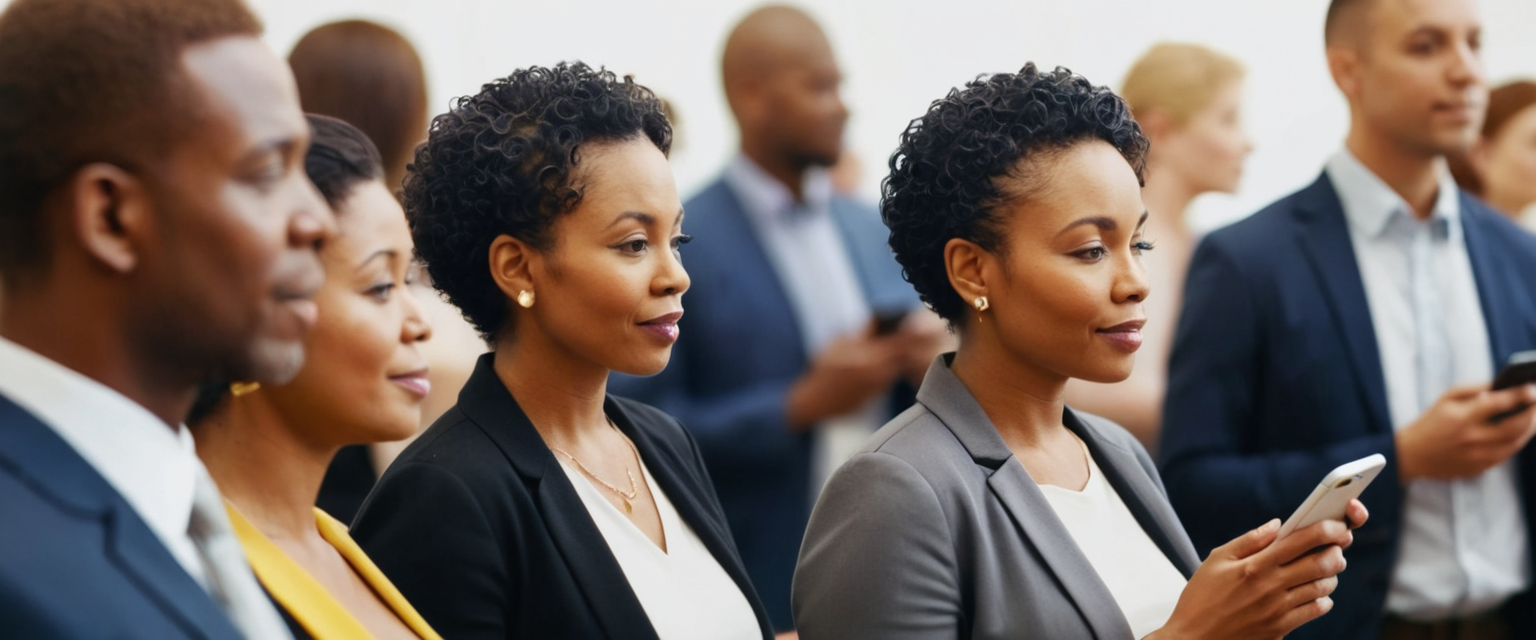
Practical Guidelines for Event Attendees: Recording Responsibly and Legally
Individuals attending public events should follow several evidence-based practices to ensure their recording activities comply with applicable law and respect others’ privacy rights. First, understand the jurisdiction and consent requirements applicable to the event’s location. Determine whether the state follows one-party or all-party consent requirements for audio recording. If the event involves participants from multiple states, assume the stricter standard will apply. Second, check venue policies explicitly. Review ticket terms, signage, and event materials to understand what recording is permitted. Many venues prohibit professional recording equipment but permit personal cell phone recording; understanding these distinctions prevents violations.
Third, record responsibly with respect to privacy expectations. While recording in public is generally permissible, consider whether the subjects being recorded have a reasonable expectation of privacy, particularly if they are children, appear to be in confidential conversations, or are in areas designated as restricted. Under First Amendment protections, recording police officers and government officials performing official duties is protected, but do not interfere with their legitimate functions. Fourth, understand the limitations on distribution and use. Recording something legally for personal use does not necessarily mean distribution is legal. Copyright protections may prevent posting full performances online; state privacy laws may restrict commercial use of images without consent; and in all-party consent states, distributing audio recordings may constitute a separate offense even if the initial recording was lawful.
Fifth, obtain clear consent when required. In all-party consent jurisdictions, obtain explicit permission from participants before recording conversations. Announce recording intentions verbally or in writing and give individuals the opportunity to object. If someone objects, cease recording. Sixth, be aware of special protections for minors. Many states impose enhanced consent requirements for recording children, requiring parental permission before recording minors’ images or using them for any purpose other than personal, non-commercial use. Seventh, respect reasonable requests not to be recorded. If someone asks you to stop recording them, comply. Even in jurisdictions where recording is legally permissible, continuing to record an individual after they explicitly object may constitute harassment, stalking, or intentional infliction of emotional distress.
Practical Guidelines for Event Organizers: Implementing Compliant Recording Policies
Event organizers bear significant responsibility for ensuring that recording policies comply with applicable law while balancing First Amendment rights and attendees’ legitimate interests in capturing events. Comprehensive recording policies should address multiple dimensions and be clearly communicated through multiple channels.
First, develop a clear written recording policy that addresses video recording, audio recording, and photography separately, as these may have different legal consequences. The policy should specify what types of personal recording equipment are permitted (e.g., personal cell phones only, no professional equipment), in which areas recording is permitted or prohibited, and what uses of recordings are authorized. For example: “Attendees may use personal cameras and cell phones to record video and photographs for personal, non-commercial use. Professional recording equipment, tripods, and commercial filming require prior written permission from the organizer. Recordings may not be distributed commercially or published online without written consent from performers and the organizer.”
Second, implement notice mechanisms to communicate recording policies effectively. Post signs at event entrances and throughout the venue stating whether recording is permitted and any limitations. Include recording policy language on tickets, ticket stubs, and event websites. For virtual or hybrid events, provide on-screen notices and send emails to registered attendees describing recording policies before the event. The redundancy of multiple notice mechanisms strengthens the argument that attendees consented to recording policies.
Third, address audio recording and consent compliance explicitly. Include language stating “This event is being recorded” or “Audio recording of this event is permitted” depending on what is being recorded. In all-party consent jurisdictions, include language stating “By entering this event, you consent to audio recording of your voice and image for the specified purposes of [security/documentation/archival/etc.].” This language helps establish implied consent in states where that is permitted and ensures that individuals are on notice before participating.
Fourth, implement technological or enforcement mechanisms to prevent unauthorized recording if desired. Deploy security staff to monitor for unauthorized professional recording equipment. For performances, use technology that prevents recording or degrades recording quality. However, recognize that such restrictions may alienate attendees and create conflicts; many event organizers have concluded that permitting limited personal recording while prohibiting commercial recording or distribution represents an acceptable middle ground.
Fifth, address copyright concerns explicitly by including language such as “Performers retain copyright in all performances and recordings thereof. Attendees may not reproduce, distribute, or commercially exploit recordings without permission from performers and organizers. Unauthorized commercial distribution of recordings may result in DMCA takedown notices and legal action.” This language serves as a notice that copyright protections apply and that attendees and others should not attempt to distribute recordings.
Sixth, address biometric and facial recognition practices explicitly. If the event uses facial recognition technology for any purpose—such as photography check-in, identification of banned individuals, or automated photography linking—provide clear notice stating “This event uses facial recognition technology. Your biometric information may be collected for [specified purposes]. You may decline participation in facial recognition by [specified method].” Obtain explicit consent from participants, maintain secure data practices, and establish procedures for secure data deletion after the event.
Seventh, address privacy concerns for minors by establishing that parental or guardian consent is required for recording images or audio of individuals under 18, except in narrow circumstances where recording is incidental to general event documentation. Include language such as “If your child will attend and you do not wish their image recorded, please notify organizers in advance.”
Eighth, provide a mechanism for individuals to opt out. Despite general event recording policies, some individuals may wish not to be recorded. Provide a clearly identified method for attendees to indicate they decline consent to recording, such as a “Do Not Record” option at registration or a visual indicator attendees can wear. While this may create operational complications, it demonstrates respect for privacy preferences and reduces potential complaints and legal exposure.
Legal Consequences for Violations: Criminal, Civil, and Professional Penalties
Violations of recording laws and privacy rights carry substantial consequences across criminal, civil, and professional domains. Understanding these consequences incentivizes compliance and demonstrates why recording ethics matter.
Criminal consequences vary substantially depending on the specific violation. In all-party consent states like California, Florida, and Illinois, unauthorized recording of conversations with a reasonable expectation of privacy constitutes a crime typically charged as a felony, carrying potential imprisonment of one to several years plus substantial fines. A first violation in Illinois is classified as a Class 3 felony (2-5 years imprisonment and $25,000 fine), while subsequent violations are Class 2 felonies (3-7 years imprisonment and $25,000 fine). In California, recording violations can result in up to one year imprisonment and $2,500 in fines per violation. Violations of copyright laws through unauthorized performance recording can result in criminal charges, though civil copyright infringement is more common.
Civil liability typically flows from privacy tort claims and copyright infringement. Individuals whose conversations are recorded without required consent in all-party consent states may sue for statutory damages, typically ranging from $100 to $5,000 per violation, plus actual damages and attorneys’ fees. Copyright infringement of performance recordings can result in statutory damages of $750 to $30,000 per work infringed, escalating to $150,000 for willful infringement. Violations of state biometric privacy laws like BIPA expose violators to liquidated statutory damages of $1,000 to $5,000 per violation, creating potentially massive liability for large-scale biometric data collection.
Professional and reputational consequences extend beyond formal legal sanctions. Journalists, photographers, and videographers who violate recording laws may face loss of press credentials, exclusion from future events, and damage to professional reputation. Employers may face legal liability if employees violate recording laws in work contexts, and employers may terminate employees for unauthorized recordings. Event organizers who fail to implement compliant recording policies may face lawsuits from attendees whose privacy was violated, damage to event reputation, and exclusion from future partnerships with venues or sponsors concerned about liability.
Defensive Technologies and Privacy Protection Methods
As surveillance and recording technologies become ubiquitous, individuals increasingly consider defensive technologies and methods to protect their privacy at public events. These range from passive measures to active technological interventions.
Passive defensive measures include positioning oneself away from potential recording angles, declining to participate in facial recognition check-in systems, and leaving or objecting to events where recording policies are unacceptable. Attendees may also wear masks, hats, or other items that obscure facial features, though such tactics may violate some venue policies or create security concerns at certain events. Some venues have begun implementing policies permitting attendees to opt out of video recording by wearing visible indicators such as specially colored wristbands or stickers, signaling to security and photographers that recording consent has not been granted.
Technological defensive measures include audio jamming devices, white noise generators, and privacy-focused camera placement. Audio jammers generate noise to prevent recording devices from capturing clear audio, protecting private conversations from being recorded. These devices range from portable units suitable for personal use to more sophisticated systems designed for office or high-security environments. However, the legality of audio jammers is unclear in many jurisdictions, as they may interfere with other electronic devices and may violate telecommunications regulations. Additionally, they are often ineffective against modern recording technology designed to filter background noise.
Opt-out mechanisms represent the most practical defensive approach available to event attendees. If event organizers provide methods for attendees to decline recording consent—such as opting out of facial recognition systems or wearing “Do Not Record” indicators—use these mechanisms. Some virtual meeting platforms, including Microsoft Teams, permit attendees to opt out of recordings, limiting their participation to view-only mode. While this approach reduces attendees’ ability to participate fully, it protects their privacy.
Advocacy and transparency demands represent an emerging defense mechanism. Attendees can advocate for stronger privacy protections at events, requesting transparent disclosure of what data is collected, how facial recognition is used, and what security measures protect biometric data. Supporting advocacy organizations that pressure venues and organizers to adopt strong privacy practices contributes to systemic improvements in event privacy standards.
Balancing Recording Rights and Privacy: Toward Sustainable Frameworks
The tension between recording rights and privacy rights at public events reflects fundamental societal values in conflict: the desire for transparency and documentation embodied in First Amendment protections, and the expectation of privacy and dignity recognized in constitutional and statutory law. Sustainable legal and ethical frameworks for recording at events must balance these competing interests rather than privileging one entirely over the other.
For attendees, the balancing principle suggests that while recording in public may be legally permissible, ethical restraint and respect for others’ privacy expectations remain important even when law does not mandate them. Recording a major public event such as a city parade or political rally where attendees have minimal privacy expectations differs ethically from surreptitiously recording someone having a private conversation at an event, even if both may be technically legal in one-party consent states.
For event organizers, the balancing principle suggests adopting recording policies that distinguish between personal, non-commercial recording (which can be permitted more liberally) and commercial recording (which justifiably requires permission). Policies permitting attendees to make personal recordings for their own enjoyment while restricting distribution and commercial use reflect this balance. Additionally, organizers should implement clear notice mechanisms and consider providing attendees with options to decline recording or opt out of facial recognition without being excluded from attending.
For performers and content creators, the balancing principle acknowledges both legitimate interests in controlling distribution of their performances and the reality that in the modern era, some recording and sharing will occur regardless of official policies. Some performers and organizers have benefited from embracing fan-generated content through platforms like YouTube or TikTok, recognizing that such content can enhance their brand and reach new audiences. However, this approach requires active decisions about how to monetize or authorize such content rather than passive acceptance.
For legislators and policymakers, the balancing principle suggests developing comprehensive frameworks that clarify recording rights in different contexts, provide clear standards for consent and notice, and establish proportionate remedies for violations. The current patchwork of one-party and all-party consent states, combined with ambiguous First Amendment protections and rapidly evolving technology, creates unnecessary confusion. Some scholars have advocated for federal legislation establishing baseline recording standards while permitting states to provide greater privacy protections.
Embracing Respectful Recording Practices
Recording at public events occurs at the intersection of multiple legal domains—constitutional law protecting First Amendment rights, state wiretapping and eavesdropping statutes establishing consent requirements, copyright law protecting performance rights, emerging biometric privacy regulations, and common law privacy torts protecting individuals’ dignity and seclusion. This multifaceted legal landscape creates both opportunities and dangers for individuals seeking to capture events through photography and recording.
The fundamental principle emerging from analysis of this legal framework is that recording rights and privacy protections are not absolute but context-dependent. In true public spaces like streets and parks, individuals generally enjoy broad rights to record matters of public interest, subject to limitations based on reasonable privacy expectations and interference with legitimate government functions. In privately owned but publicly accessible spaces like concert venues and retail establishments, property owners retain significant rights to regulate recording. In spaces with heightened privacy expectations—such as bathrooms, bedrooms, closed meetings, or private conversations—individuals’ privacy interests substantially outweigh recording interests, and legal protections tend to be stringent.
The distinction between audio and video recording remains legally and practically significant. Video-only recording receives greater protection than audio recording, which is subject to state-by-state consent requirements varying from permissive one-party consent standards to restrictive all-party consent requirements. Individuals recording at events should ascertain whether audio is being captured and what consent requirements apply in the relevant jurisdiction.
Copyright law, while conceptually distinct from privacy law, creates substantial practical barriers to recording performances at events. Even when an individual’s privacy interest in recording is minimal, the performer or organizer’s copyright interest in controlling reproductions of their performance often prohibits or severely restricts recording distribution. Individuals considering recording live performances should expect that copyright holders will enforce their rights through DMCA takedown notices and potentially legal action if recordings are distributed.
Emerging technologies such as facial recognition create new privacy frontier that existing law has not fully addressed. Event organizers employing facial recognition should ensure compliance with state biometric privacy laws, obtain explicit consent, and implement robust data security practices. Attendees should be aware that facial recognition may be occurring and should understand their options to decline participation.
For event attendees, a practical framework for recording responsibly involves understanding applicable law, checking venue policies, recording with respect for others’ reasonable privacy expectations, understanding limitations on distribution and use, and being prepared to cease recording if requested. For event organizers, effective policies involve clearly communicating recording rules through multiple channels, distinguishing between personal and commercial recording, addressing copyright and biometric concerns explicitly, and providing attendees with meaningful opportunities to decline recording.
Ultimately, the legal landscape of public event recording reflects a society attempting to balance the important interest in documenting and sharing information about public events with respect for individuals’ privacy, dignity, and the performance rights of content creators. This balance requires ongoing dialogue among attendees, organizers, performers, lawmakers, and courts as technology evolves and social norms around privacy and surveillance shift. Neither absolute rights to record nor absolute privacy can be sustained in a complex, interconnected society; sustainable approaches must recognize legitimate competing interests and craft frameworks that enable both transparent documentation of matters of public concern and meaningful privacy protections for individuals.
Protect Your Digital Life with Activate Security
Get 14 powerful security tools in one comprehensive suite. VPN, antivirus, password manager, dark web monitoring, and more.
Get Protected Now

